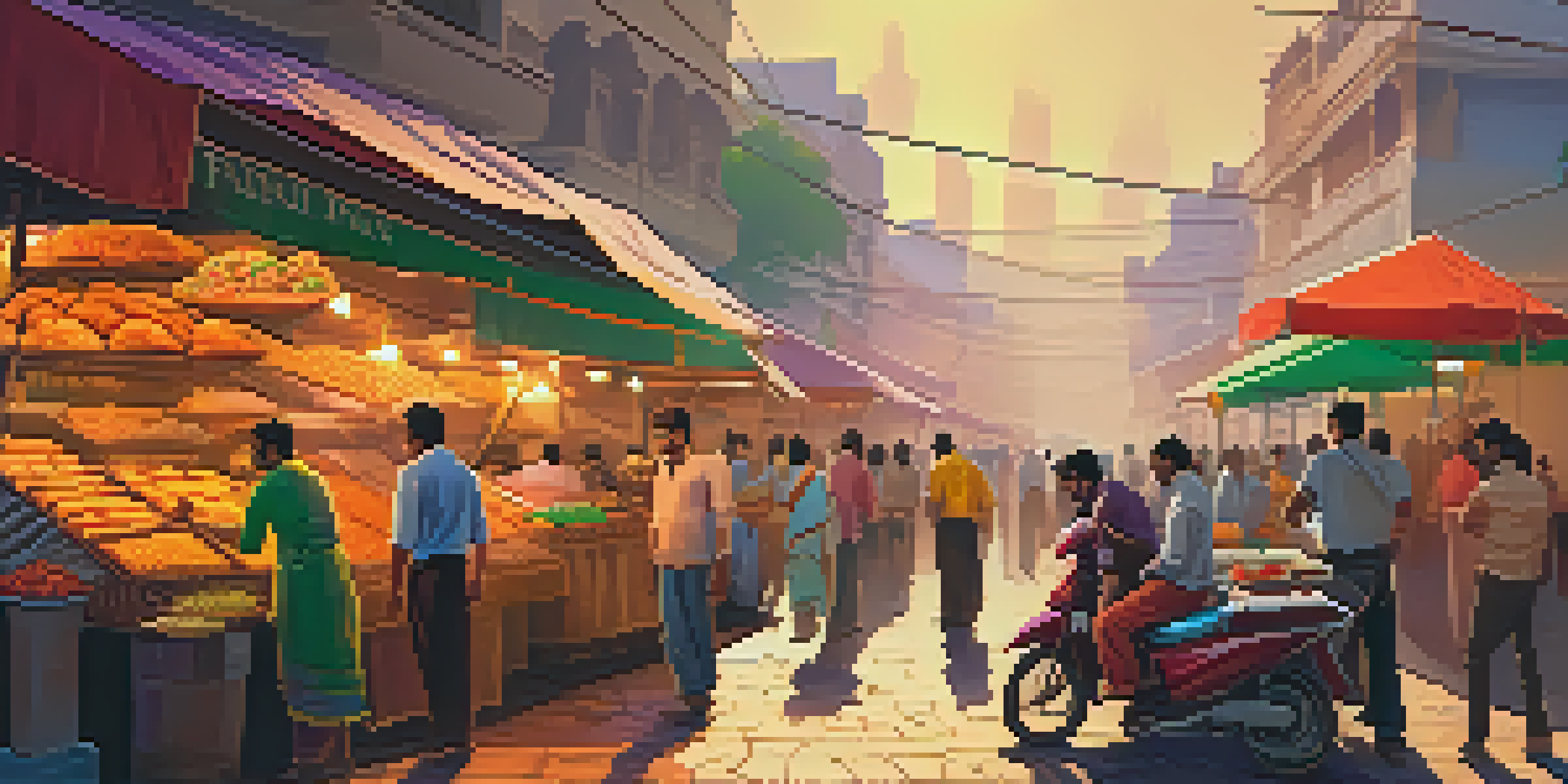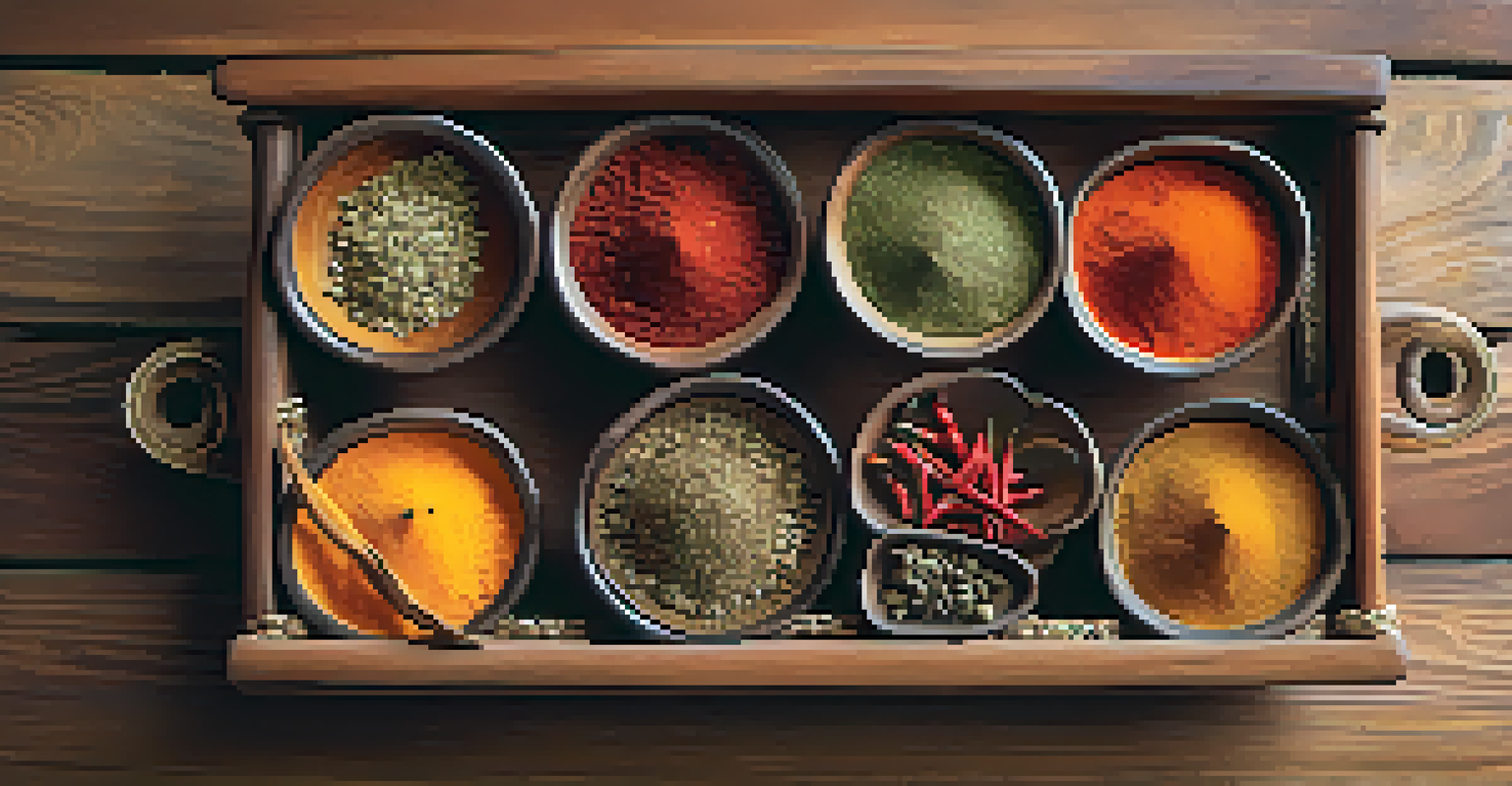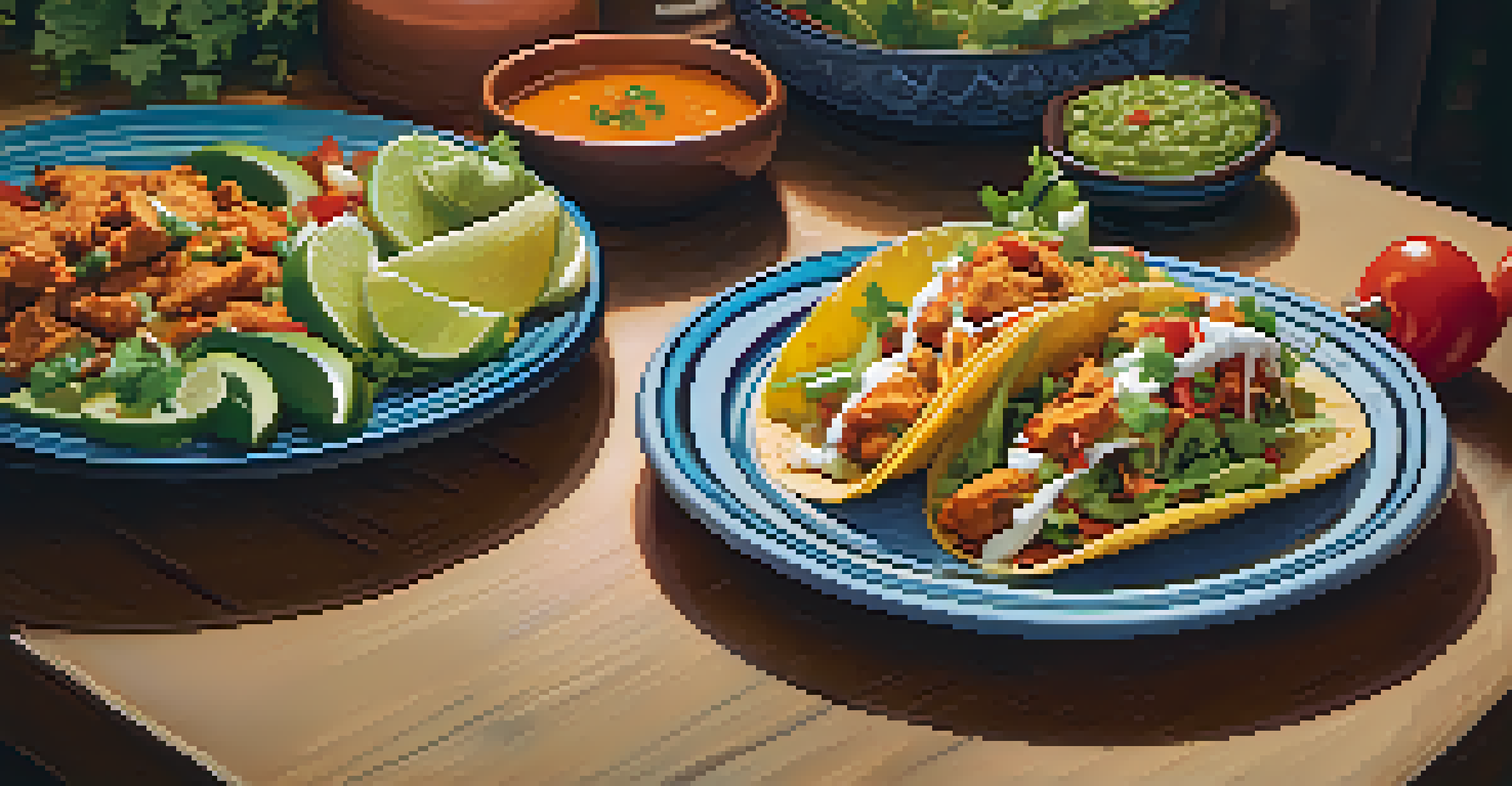Historical Dishes: The Evolution of Indian Cuisine Over Time

The Origins of Indian Cuisine: A Cultural Mosaic
Indian cuisine is a vibrant tapestry woven from various cultural influences. Its roots can be traced back thousands of years to ancient civilizations such as the Indus Valley, where grains like rice and wheat were first cultivated. Over time, the arrival of different cultures—from Persian to Portuguese—shaped the culinary landscape, creating a unique blend of flavors and techniques.
Food is our common ground, a universal experience.
For example, the Mughal Empire introduced rich, aromatic spices and cooking methods like slow-cooking, which are still prevalent in modern Indian kitchens. The culinary traditions of each region reflect its history, geography, and the people who inhabited it, transforming simple ingredients into complex dishes. This evolution showcases how food serves as a narrative of cultural exchange and adaptation.
As trade routes opened up, new ingredients like chili peppers and potatoes found their way into Indian kitchens, further diversifying the cuisine. Thus, what began as a collection of local practices evolved into a rich and varied culinary tradition that tells the story of India's history.
The Spice Trade: Influencing Flavors and Techniques
The spice trade played a pivotal role in shaping Indian cuisine, positioning India as a global hub for spices. Spices like black pepper, cardamom, and turmeric were not only valuable commodities but also essential elements of Indian cooking. This rich array of spices contributed to the depth of flavor found in countless dishes and made Indian cuisine unique.

As traders from Europe and the Middle East arrived, they brought their own culinary influences, which blended seamlessly with local practices. For instance, the introduction of saffron and dry fruits from Persian cuisine led to the creation of iconic dishes like biryani and various sweets. This fusion exemplifies how food is a living history that evolves with time and interaction.
Indian Cuisine's Cultural Evolution
Indian cuisine has evolved over centuries, influenced by diverse cultures and trade, creating a rich and complex culinary tradition.
Moreover, the demand for spices catalyzed the exploration of new trade routes, which in turn influenced dietary patterns throughout the world. The globalization of Indian spices ushered in a new era of culinary exploration, solidifying India's position as a leader in diverse gastronomic experiences.
Regional Diversity: A Culinary Journey Across India
India's vast geography and cultural diversity contribute to its regional culinary variations. Each state showcases unique ingredients, cooking techniques, and flavors, from the coastal dishes of Kerala to the hearty curries of Punjab. This regionalism is not just about food; it reflects the identity and heritage of the communities.
Cooking is like love. It should be entered into with abandon or not at all.
Take, for instance, the difference between North Indian and South Indian cuisine. While North Indian dishes often feature richer gravies and breads like naan, South Indian cuisine is known for its rice-based dishes and tangy flavors, exemplified in sambar and dosa. This variety ensures that every meal tells a story of local ingredients and traditions.
Furthermore, festivals and religious practices influence regional dishes, adding another layer of richness. Dishes prepared during festivals, like the sweets made for Diwali or the savory snacks for Holi, highlight how food plays an integral role in cultural celebrations and community bonding.
The Influence of Colonialism on Indian Cuisine
The colonial era marked a significant turning point in Indian cuisine, introducing new ingredients and cooking styles while altering traditional practices. The British, for instance, brought about the popularity of tea, which has since become a staple in Indian culture. Similarly, the introduction of new vegetables and fruits transformed local diets.
During this period, the fusion of British and Indian culinary traditions gave rise to unique dishes such as the beloved 'kedgeree,' a blend of rice, fish, and eggs. This dish reflects how colonialism led to the intermingling of cuisines, creating new flavors and recipes that are now part of India's culinary repertoire.
Regional Diversity in Indian Food
Each region of India showcases unique ingredients and cooking techniques, reflecting the cultural identity and heritage of its communities.
Moreover, the adaptation of Indian dishes to suit British tastes resulted in a shift in presentation and preparation. This transformation highlights how cuisines can evolve under external influences while retaining their core identity, illustrating the resilience and adaptability of Indian culinary traditions.
The Modern Era: Globalization and Fusion Cuisine
In the modern era, globalization has further transformed Indian cuisine, leading to the rise of fusion dishes that blend elements from various culinary traditions. Chefs are now experimenting with traditional recipes, incorporating global ingredients and techniques to create innovative dishes. This trend has made Indian cuisine more accessible and appealing to a broader audience.
For instance, dishes like 'tandoori chicken tacos' or 'butter chicken pizza' showcase how traditional flavors can be reimagined in contemporary contexts. Such fusion not only caters to evolving tastes but also highlights the versatility of Indian spices and ingredients in international cuisine.
As Indian chefs gain recognition on global platforms, there's a growing emphasis on authenticity and sustainability. Many are returning to their roots, celebrating traditional cooking methods while also embracing modern culinary practices, ensuring that the rich history of Indian cuisine continues to thrive.
Street Food: A Reflection of Urban Indian Culture
Street food in India is a vibrant reflection of urban culture, offering an array of quick bites that are deeply rooted in local flavors and traditions. From the spicy pani puri of Mumbai to the savory vada pav, each street food item tells a story of the city it hails from. These dishes are not only affordable but also serve as a cultural bridge, uniting people from different backgrounds.
Street vendors often innovate, adapting recipes to suit changing tastes while maintaining traditional techniques. This dynamic environment fosters creativity, leading to the emergence of new flavors and dishes that capture the essence of contemporary Indian life. For example, the introduction of fusion street food has made it popular among the younger generation.
Future of Cuisine: Tradition Meets Innovation
The future of Indian cuisine lies in balancing the preservation of traditional practices with innovative approaches that embrace sustainability.
Moreover, street food plays a crucial role in the social fabric of Indian cities. It serves as a gathering point for communities, offering a shared experience that transcends social and economic barriers. This aspect of Indian cuisine reminds us that food is not just sustenance; it's a way to connect and celebrate community.
The Future of Indian Cuisine: Preserving Tradition and Innovation
Looking ahead, the future of Indian cuisine lies in the delicate balance between preserving traditional practices and embracing innovation. As chefs and home cooks alike explore new culinary horizons, there's a growing awareness of the importance of sustainability and locally sourced ingredients. This movement aims to honor traditional recipes while promoting environmental responsibility.
Additionally, the resurgence of interest in regional cuisines is encouraging a deeper appreciation for India's culinary heritage. People are increasingly seeking authentic experiences that celebrate local flavors and stories, creating a demand for dishes that reflect the diversity of Indian cuisine. This trend not only preserves history but also empowers local communities.

Ultimately, the evolution of Indian cuisine will continue to be shaped by cultural exchanges, global influences, and a commitment to sustainability. As we venture into the future, the rich tapestry of Indian dishes will undoubtedly weave in new threads while honoring its illustrious past.